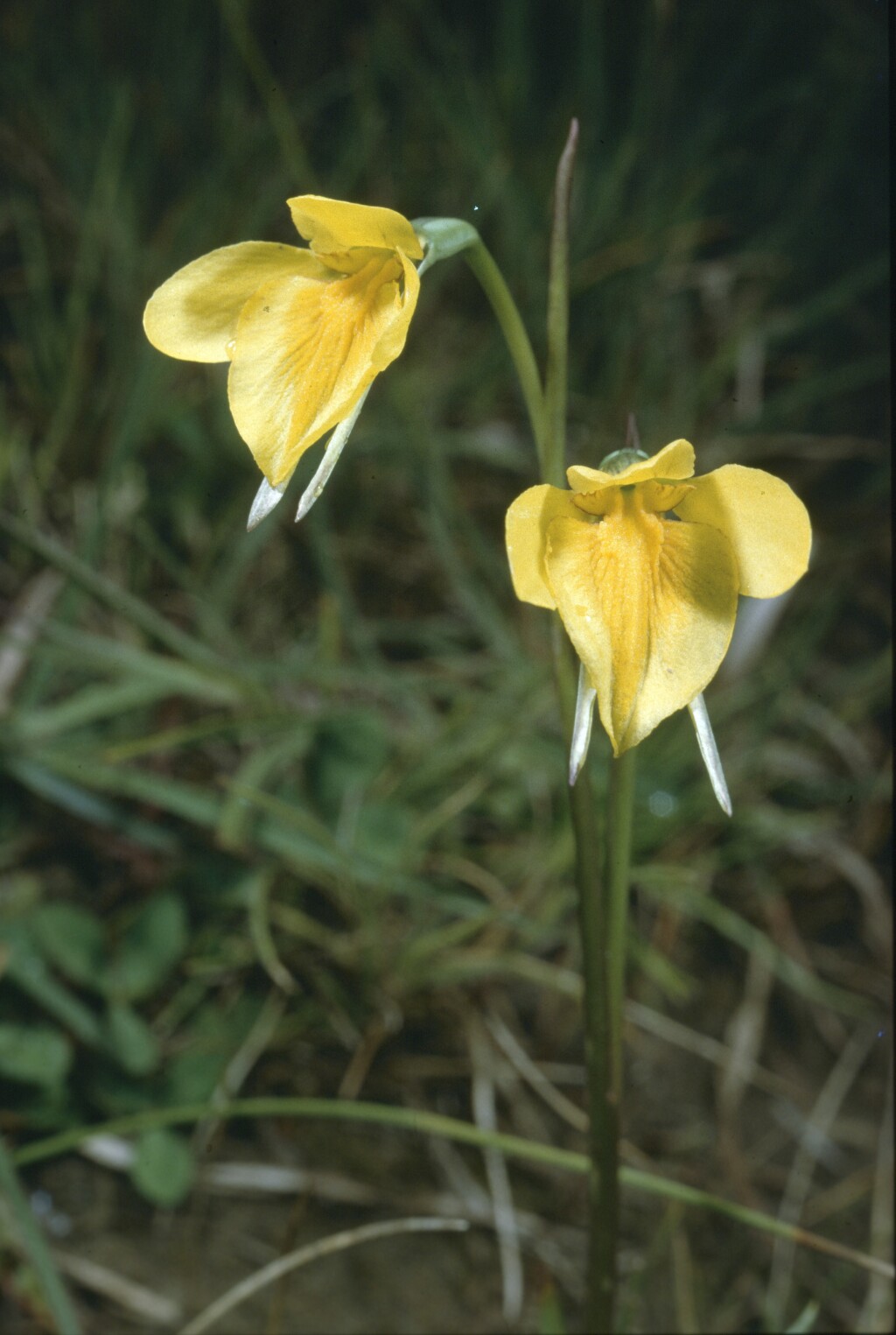Flowering plant slender, 6–15 cm tall, often in densely crowded tufts of up to 30 plants. Leaves mostly 3–7, linear, 3–10 cm long, in a loose, erect tussock. Flowers 1 or 2, drooping, not opening widely, bright golden yellow, orange-yellow or orange, with a few short dark striations on the labellum and base of the dorsal sepal; pedicel (excluding ovary) 1–2.5 cm long, very slender, partly enclosed within bract; dorsal sepal porrect in basal third then obliquely erect, ovate, 7–12 mm long; lateral sepals obliquely deflexed, usually parallel, linear-oblanceolate, 10–16 mm long, green; petals incurved, 6–10 mm long, claw green, lamina ovate to ovate-elliptic. Labellum obliquely deflexed, 10–15 mm long, 3-lobed; lateral lobes small, oblong-cuneate, outer margins toothed; mid-lobe flat or shallowly concave, c. 3 times as long as the lateral lobes, broadly ovate, narrowed at base, with 2 widely separated, pubescent, longitudinal ridges extending shortly beyond base, a single, less distinct ridge continuing nearly to apex. Column wings about same height as anther. Flowers Sep.–Oct.
This critically endangered species has lost most of its habitat to agriculture and urbanisation.
Thought to hybridise with Diuris palustris, yielding the probably extinct named hybrid D. ×fastidiosa. See also notes under D. chryseopsis.


